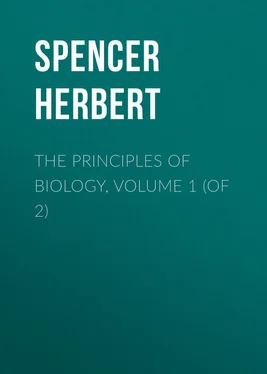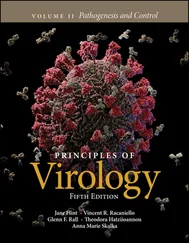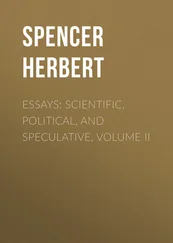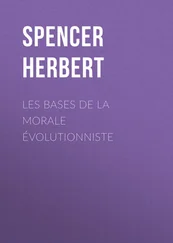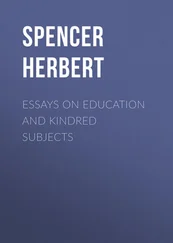Herbert Spencer - The Principles of Biology, Volume 1 (of 2)
Здесь есть возможность читать онлайн «Herbert Spencer - The Principles of Biology, Volume 1 (of 2)» — ознакомительный отрывок электронной книги совершенно бесплатно, а после прочтения отрывка купить полную версию. В некоторых случаях можно слушать аудио, скачать через торрент в формате fb2 и присутствует краткое содержание. Жанр: Философия, foreign_antique, foreign_prose, на английском языке. Описание произведения, (предисловие) а так же отзывы посетителей доступны на портале библиотеки ЛибКат.
- Название:The Principles of Biology, Volume 1 (of 2)
- Автор:
- Жанр:
- Год:неизвестен
- ISBN:нет данных
- Рейтинг книги:3 / 5. Голосов: 1
-
Избранное:Добавить в избранное
- Отзывы:
-
Ваша оценка:
- 60
- 1
- 2
- 3
- 4
- 5
The Principles of Biology, Volume 1 (of 2): краткое содержание, описание и аннотация
Предлагаем к чтению аннотацию, описание, краткое содержание или предисловие (зависит от того, что написал сам автор книги «The Principles of Biology, Volume 1 (of 2)»). Если вы не нашли необходимую информацию о книге — напишите в комментариях, мы постараемся отыскать её.
The Principles of Biology, Volume 1 (of 2) — читать онлайн ознакомительный отрывок
Ниже представлен текст книги, разбитый по страницам. Система сохранения места последней прочитанной страницы, позволяет с удобством читать онлайн бесплатно книгу «The Principles of Biology, Volume 1 (of 2)», без необходимости каждый раз заново искать на чём Вы остановились. Поставьте закладку, и сможете в любой момент перейти на страницу, на которой закончили чтение.
Интервал:
Закладка:
Generalizing some of the facts which he gives, Professor Graham says: – "The equivalent of a colloid appears to be always high, although the ratio between the elements of the substance may be simple. Gummic acid, for instance, may be represented by C 12H 22O 11; but, judging from the small proportions of lime and potash which suffice to neutralize this acid, the true numbers of its formula must be several times greater. It is difficult to avoid associating the inertness of colloids with their high equivalents, particularly where the high number appears to be attained by the repetition of a small number. The inquiry suggests itself whether the colloid molecule may not be constituted by the grouping together of a number of smaller crystalloid molecules, and whether the basis of colloidality may not really be this composite character of the molecule."
§ 7. A further contrast between colloids and crystalloids is equally significant in its relations to vital phenomena. Professor Graham points out that the marked differences in volatility displayed by different bodies, are paralleled by differences in the rates of diffusion of different bodies through liquids. As alcohol and ether at ordinary temperatures, and various other substances at higher temperatures, diffuse themselves in a gaseous form through the air; so, a substance in aqueous solution, when placed in contact with a mass of water (in such way as to avoid mixture by circulating currents) diffuses itself through this mass of water. And just as there are various degrees of rapidity in evaporation, so there are various degrees of rapidity in diffusion: "the range also in the degree of diffusive mobility exhibited by different substances appears to be as wide as the scale of vapour-tensions." This parallelism is what might have been looked for; since the tendency to assume a gaseous state, and the tendency to spread in solution through a liquid, are both consequences of molecular mobility. It also turns out, as was to be expected, that diffusibility, like volatility, has, other things equal, a relation to molecular weight – other things equal, we must say, because molecular mobility must, as pointed out in § 5, be affected by other properties of atoms, besides their inertia. Thus the substance most rapidly diffused of any on which Professor Graham experimented, was hydrochloric acid – a compound which is of low molecular weight, is gaseous save under a pressure of forty atmospheres, and ordinarily exists as a liquid, only in combination with water. Again, "hydrate of potash may be said to possess double the velocity of diffusion of sulphate of potash, and sulphate of potash again double the velocity of sugar, alcohol, and sulphate of magnesia," – differences which have a general correspondence with differences in the massiveness of their molecules.
But the fact of chief interest to us here, is that the relatively small-moleculed crystalloids have immensely greater diffusive power than the relatively large-moleculed colloids. Among the crystalloids themselves there are marked differences of diffusibility; and among the colloids themselves there are parallel differences, though less marked ones. But these differences are small compared with that between the diffusibility of the crystalloids as a class, and the diffusibility of the colloids as a class. Hydrochloric acid is seven times as diffusible as sulphate of magnesia; but it is fifty times as diffusible as albumen, and a hundred times as diffusible as caramel.
These differences of diffusibility manifest themselves with nearly equal distinctness, when a permeable septum is placed between the solution and the water. The result is that when a solution contains substances of different diffusibilities, the process of dialysis, as Professor Graham calls it, becomes a means of separating the mixed substances: especially when such mixed substances are partly crystalloids and partly colloids. The bearing of this fact on the interpretation of organic processes will be obvious. Still more obvious will its bearing be, on joining with it the remarkable fact that while crystalloids can diffuse themselves through colloids nearly as rapidly as through water, colloids can scarcely diffuse themselves at all through other colloids. From a mass of jelly containing salt, into an adjoining mass of jelly containing no salt, the salt spread more in eight days than it spread through water in seven days; while the spread of "caramel through the jelly appeared scarcely to have begun after eight days had elapsed." So that we must regard the colloidal compounds of which organisms are built, as having, by their physical nature, the ability to separate colloids from crystalloids, and to let the crystalloids pass through them with scarcely any resistance.
One other result of these researches on the relative diffusibilities of different substances has a meaning for us. Professor Graham finds that not only does there take place, by dialysis, a separation of mixed substances which are unlike in their molecular mobilities; but also that combined substances between which the affinities are feeble, will separate on the dialyzer, if their molecular mobilities are strongly contrasted. Speaking of the hydrochloride of peroxide of iron, he says, "such a compound possesses an element of instability in the extremely unequal diffusibility of its constituents;" and he points out that when dialyzed, the hydrochloric acid gradually diffuses away, leaving the colloidal peroxide of iron behind. Similarly, he remarks of the peracetate of iron, that it "may be made a source of soluble peroxide, as the salt referred to is itself decomposed to a great extent by diffusion on the dialyzer." Now this tendency to separate displayed by substances which differ widely in their molecular mobilities, though usually so far antagonized by their affinities as not to produce spontaneous decomposition, must, in all cases, induce a certain readiness to change which would not else exist. The unequal mobilities of the combined atoms must give disturbing forces a greater power to work transformations than they would otherwise have. Hence the probable significance of a fact named at the outset, that while three of the chief organic elements have the greatest atomic mobilities of any elements known, the fourth, carbon, has the least atomic mobility of known elements. Though, in its simple compounds, the affinities of carbon for the rest are strong enough to prevent the effects of this great difference from clearly showing themselves; yet there seems reason to think that in those complex compounds composing organic bodies – compounds in which there are various cross affinities leading to a state of chemical tension – this extreme difference in the molecular mobilities must be an important aid to molecular re-arrangements. In short, we are here led by concrete evidence to the conclusion which we before drew from first principles, that this great unlikeness among the combined units must facilitate differentiations.
§ 8. A portion of organic matter in a state to exhibit those phenomena which the biologist deals with, is, however, something far more complex than the separate organic matters we have been studying; since a portion of organic matter in its integrity, contains several of these.
In the first place no one of those colloids which make up the mass of a living body, appears capable of carrying on vital changes by itself: it is always associated with other colloids. A portion of animal-tissue, however minute, almost always contains more than one form of protein-substance: different chemical modifications of albumen and gelatine are present together, as well as, probably, a soluble and insoluble modification of each; and there is usually more or less of fatty matter. In a single vegetal cell, the minute quantity of nitrogenous colloid present, is imbedded in colloids of the non-nitrogenous class. And the microscope makes it at once manifest, that even the smallest and simplest organic forms are not absolutely homogeneous.
Читать дальшеИнтервал:
Закладка:
Похожие книги на «The Principles of Biology, Volume 1 (of 2)»
Представляем Вашему вниманию похожие книги на «The Principles of Biology, Volume 1 (of 2)» списком для выбора. Мы отобрали схожую по названию и смыслу литературу в надежде предоставить читателям больше вариантов отыскать новые, интересные, ещё непрочитанные произведения.
Обсуждение, отзывы о книге «The Principles of Biology, Volume 1 (of 2)» и просто собственные мнения читателей. Оставьте ваши комментарии, напишите, что Вы думаете о произведении, его смысле или главных героях. Укажите что конкретно понравилось, а что нет, и почему Вы так считаете.
